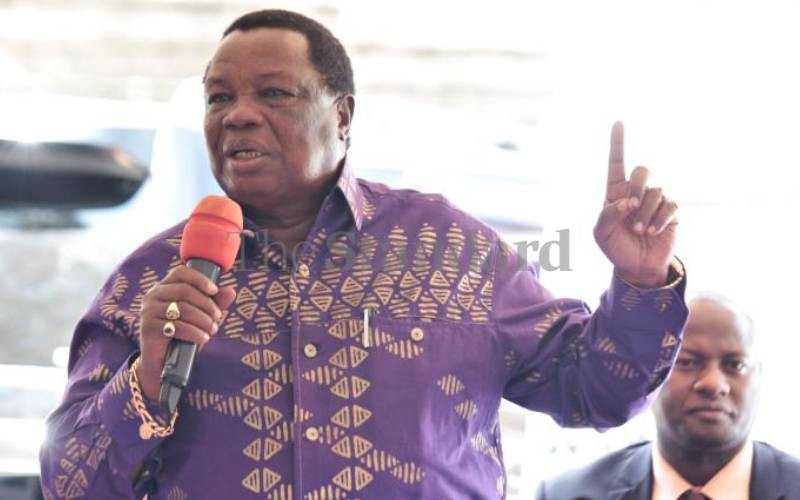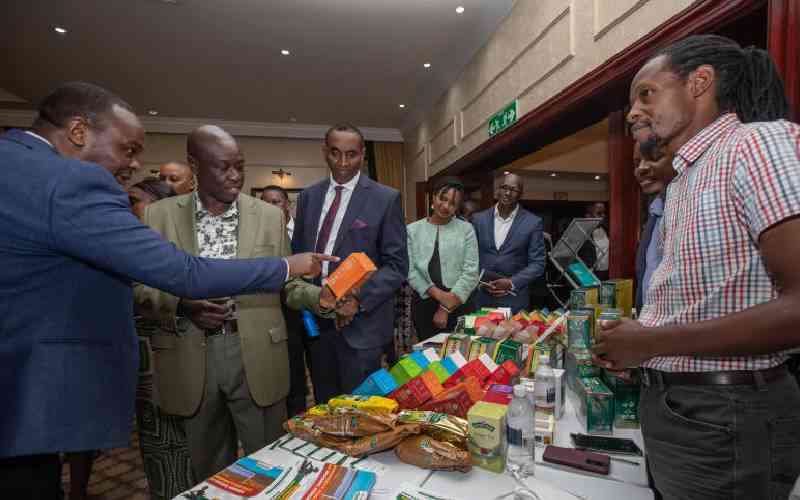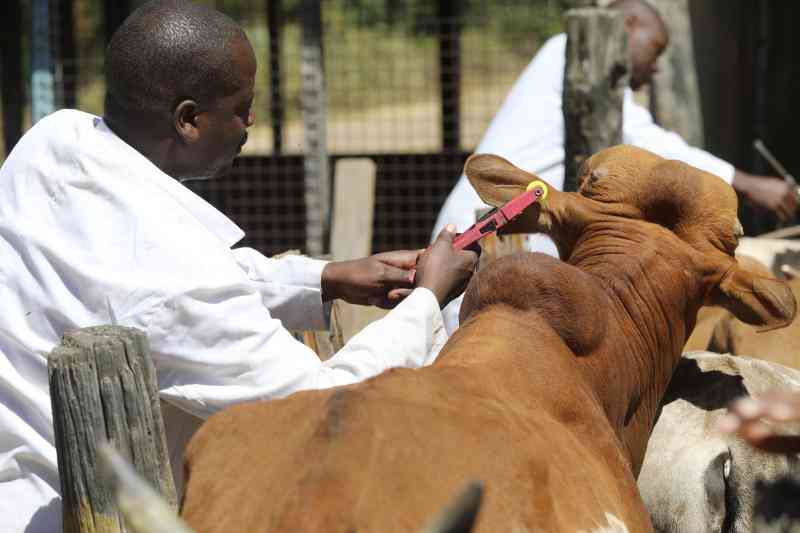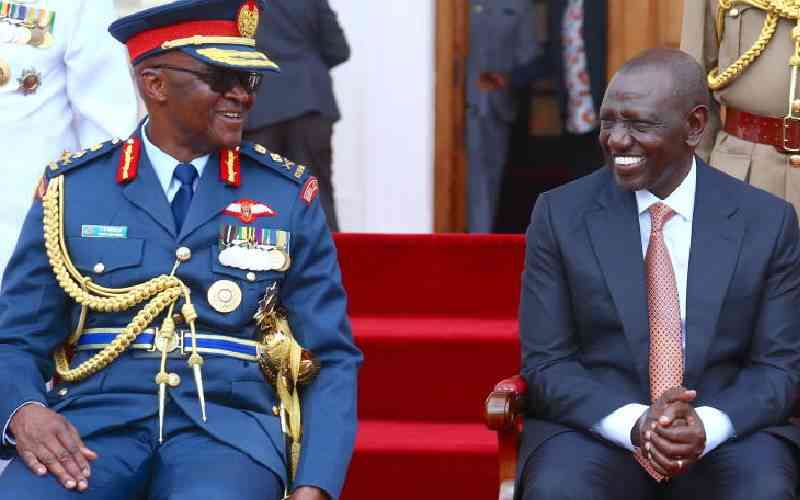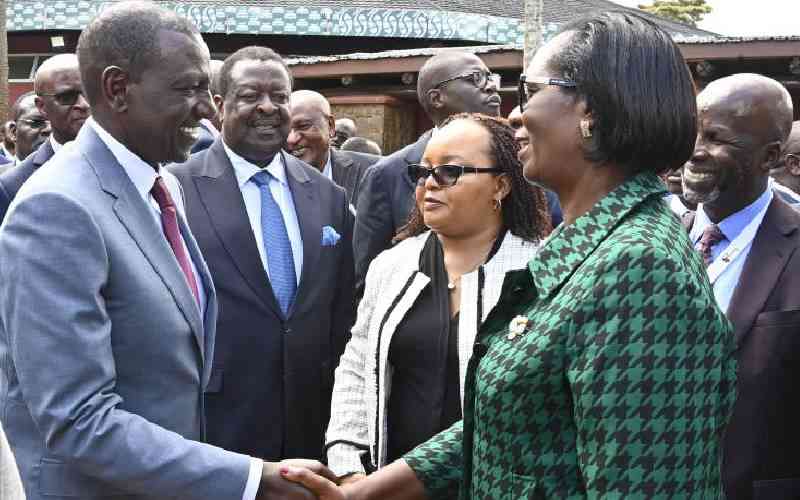
Wikipedia has defined “Orgware” as a combination of two words - organise and ware (goods).
The term describes the framework conditions for Information Technology (IT) projects that are neither part of the hardware nor software but are necessary to achieve the project goals.
This organisational area includes, among others, user manuals, concepts for IT projects and security requirements. Occasionally, methods in IT project management are also referred to as Orgware. In aeronautical physics, the Orgware is best explained by the interplay of aircraft parts, systems, and thermodynamics in flying an aircraft.
Therefore, an organisation of fuselage, avionics and four main forces of thermodynamics - lift, thrust, gravity and drag. For the aircraft to achieve flight and remain airborne, all these four forces must balance.
Similarly, a country's economy also requires a balanced approach to achieve sustainable growth. Kenya has made significant strides in recent years, but there is still a need to steer economic growth to ensure a prosperous future for all Kenyans. On October 19, 2022 and June 3, 2023, the Kenya Association of Manufacturers (KAM) held a Manufacturing Summit themed, Kenya Manufacturing Agenda 20BY30.
As KAM, we had the unique opportunity and privilege of sharing our thoughts on how, together with the government, we can high-grade manufacturing contribution from the current 7.8 per cent of gross domestic product (GDP) to 20 per cent by 2030. This is an ambitious dream of growing manufacturing by threefold especially considering that manufacturing contribution to the GDP has been declining from 11.16 per cent in 2011.
It suffices to say that the manufacturing sector itself has not shrunk in nominal terms. However, other sectors such as telecom, financial services, retail and wholesale, have grown faster than manufacturing. But just like an aircraft, the manufacturing “jet” engines are slowing down, hence unable to cruise at a sustainable altitude.
According to data from the World Bank, the global average for manufacturing contribution to GDP stood at 16 per cent. Comparatively, Kenya is among the lowest at 7.8 per cent relative to other countries: Ireland (38%), China (28%), Thailand (27%), South Korea (26%), Vietnam (25%), Singapore (21%), Japan (20%). In Africa, Uganda (16%), Egypt (16%) Nigeria (14%), Zimbabwe (12%), and South Africa (12%).
But why are these numbers important? Well, at 7.8 per cent of GDP, the manufacturing sector in Kenya has the highest number of waged employment at 352,000 people (KNBS 2022), only second to the public sector employment. Manufacturing contributes over Sh360 billion to the government tax coffers.
Therefore, by high grading the contribution to 20 per cent, the job creation jumps to circa 1 million, Sh1 trillion in taxes and economic output of circa Sh6 trillion. For Kenya to develop economically and create jobs for millions of young people, this sector must also be at the centre of the Bottom-up Economic Transformation Agenda (BETA).
So, back to the aeronautical physics analogy, as a functioning 'Orgware', the first force to be considered is the 'lift'. This force is equivalent to the economic policies that promote economic growth. Kenya needs to implement policies that encourage investment, innovation, and productivity.
This can be achieved by creating a favourable business environment, reducing bureaucracy, and streamlining regulations. The government also needs to make strategic investments in infrastructure to promote economic growth, particularly in the transport, communication, and energy sectors.
At KAM we have come up with an export-led growth strategy as the arrowhead for sustainable economic growth. The World Bank data on global country export ranking places Kenya’s exports at circa $13 billion (Sh1.9 trillion) in 2022, in comparison with Tanzania’s $11 billion, Uganda’s $5 billion, Ukraine’s amidst devastating war $56 billion, Israel $166 billion, Turkey $343 billion and Singapore $870 billion.
To put it in context, Brazil’s export value for chicken meat was circa $10 billion in 2022, just $3 billion shy of all Kenyan exports. Regrettably, most of the chicken meat was exported to the market near Kenya like the Middle East, about 4.5 hours by flight as opposed to 17 hours from Sao Paulo.
Stay informed. Subscribe to our newsletter
Most of Brazil’s chicken farmers are small-scale, just like Kenya. However, the Government of Brazil has regimented them into cooperatives and provided aggregation centres for slaughter, packaging, and export facilities.
The second force is thrust, which represents the government's ability to drive economic growth. The government can use its power to influence the economy through fiscal and monetary policies. This includes taxation, public spending, and borrowing. Effective fiscal management and the implementation of monetary policies that support economic growth can significantly boost the economy.
The third force is gravity, which represents the forces holding back economic growth. This includes corruption, political instability, and weak legal institutions. The government must address these factors head-on to ensure a favourable environment for businesses to thrive. Strong legal institutions, transparency, and accountability will attract foreign investment and boost economic growth.
The fourth force is a drag, which is equivalent to inefficiencies in the economy. This includes waste, monopolies, and poor infrastructure. The government must address these inefficiencies by investing in education, research, and development, and modernising the industrial sector. To tackle these inefficiencies, the government must work hand in hand with the private sector and create a conducive environment for businesses to thrive.
With these four forces in mind, Kenya can steer economic growth in the right direction. The government needs to implement policies that drive economic growth through fiscal and monetary policy, address factors that hold back growth, and reduce inefficiencies through investment in education, research, and business modernization.
Only then can Kenya achieve sustainable economic growth, improve the standard of living for its citizens and secure a prosperous future for generations to come.
The writer is chief executive of Kenya Association of Manufacturers
 The Standard Group Plc is a
multi-media organization with investments in media platforms spanning newspaper
print operations, television, radio broadcasting, digital and online services. The
Standard Group is recognized as a leading multi-media house in Kenya with a key
influence in matters of national and international interest.
The Standard Group Plc is a
multi-media organization with investments in media platforms spanning newspaper
print operations, television, radio broadcasting, digital and online services. The
Standard Group is recognized as a leading multi-media house in Kenya with a key
influence in matters of national and international interest.
 The Standard Group Plc is a
multi-media organization with investments in media platforms spanning newspaper
print operations, television, radio broadcasting, digital and online services. The
Standard Group is recognized as a leading multi-media house in Kenya with a key
influence in matters of national and international interest.
The Standard Group Plc is a
multi-media organization with investments in media platforms spanning newspaper
print operations, television, radio broadcasting, digital and online services. The
Standard Group is recognized as a leading multi-media house in Kenya with a key
influence in matters of national and international interest.



